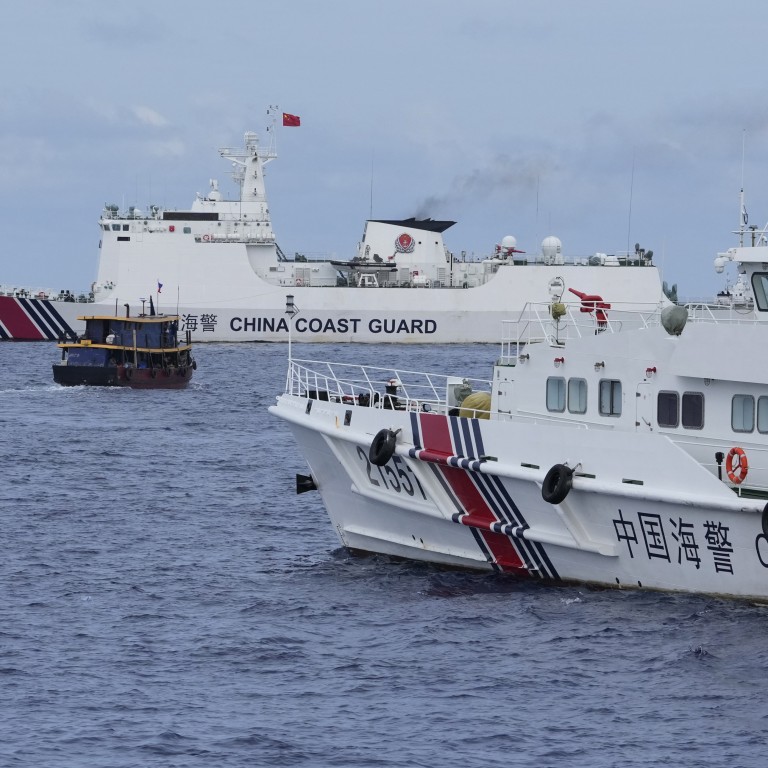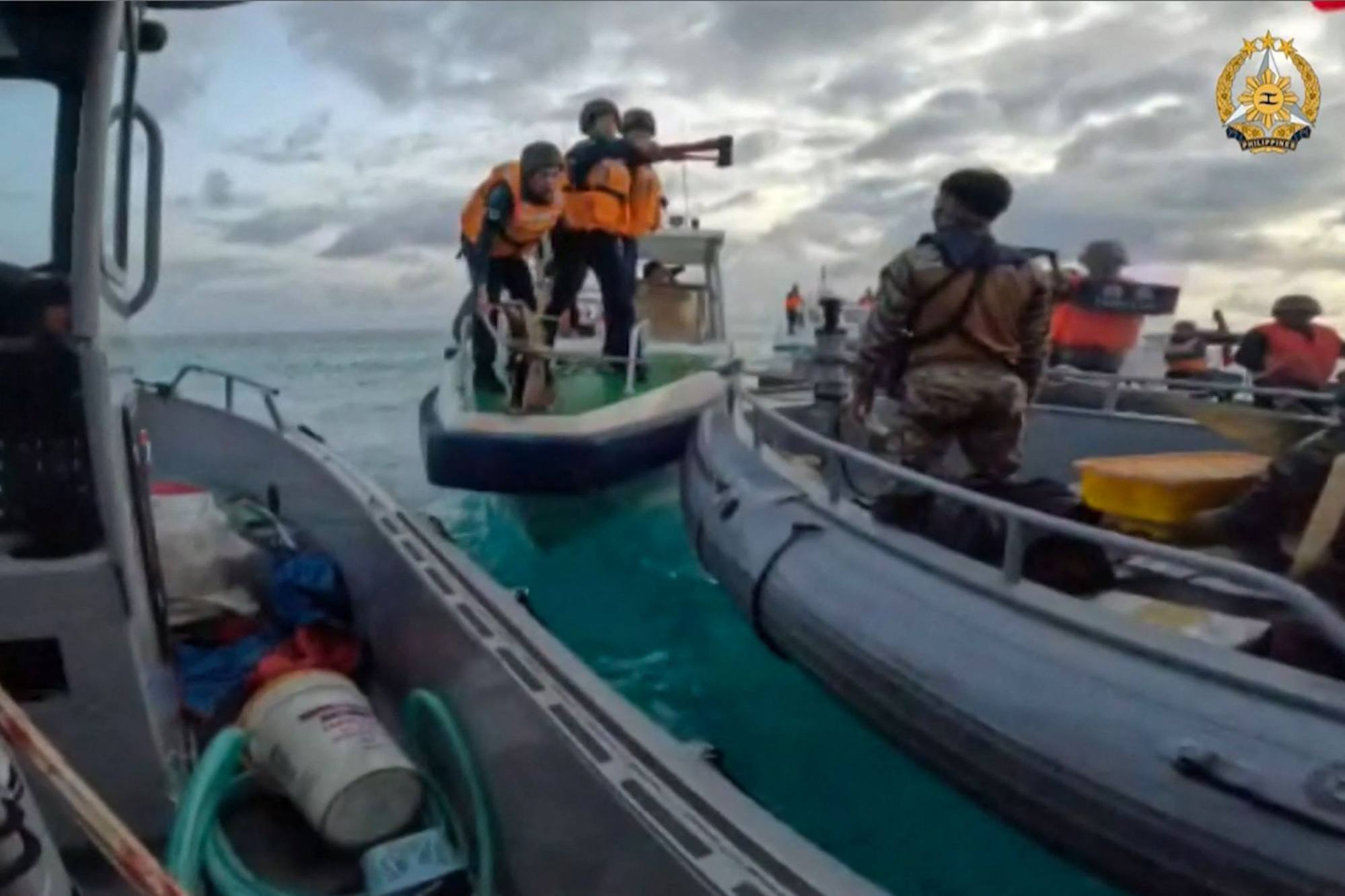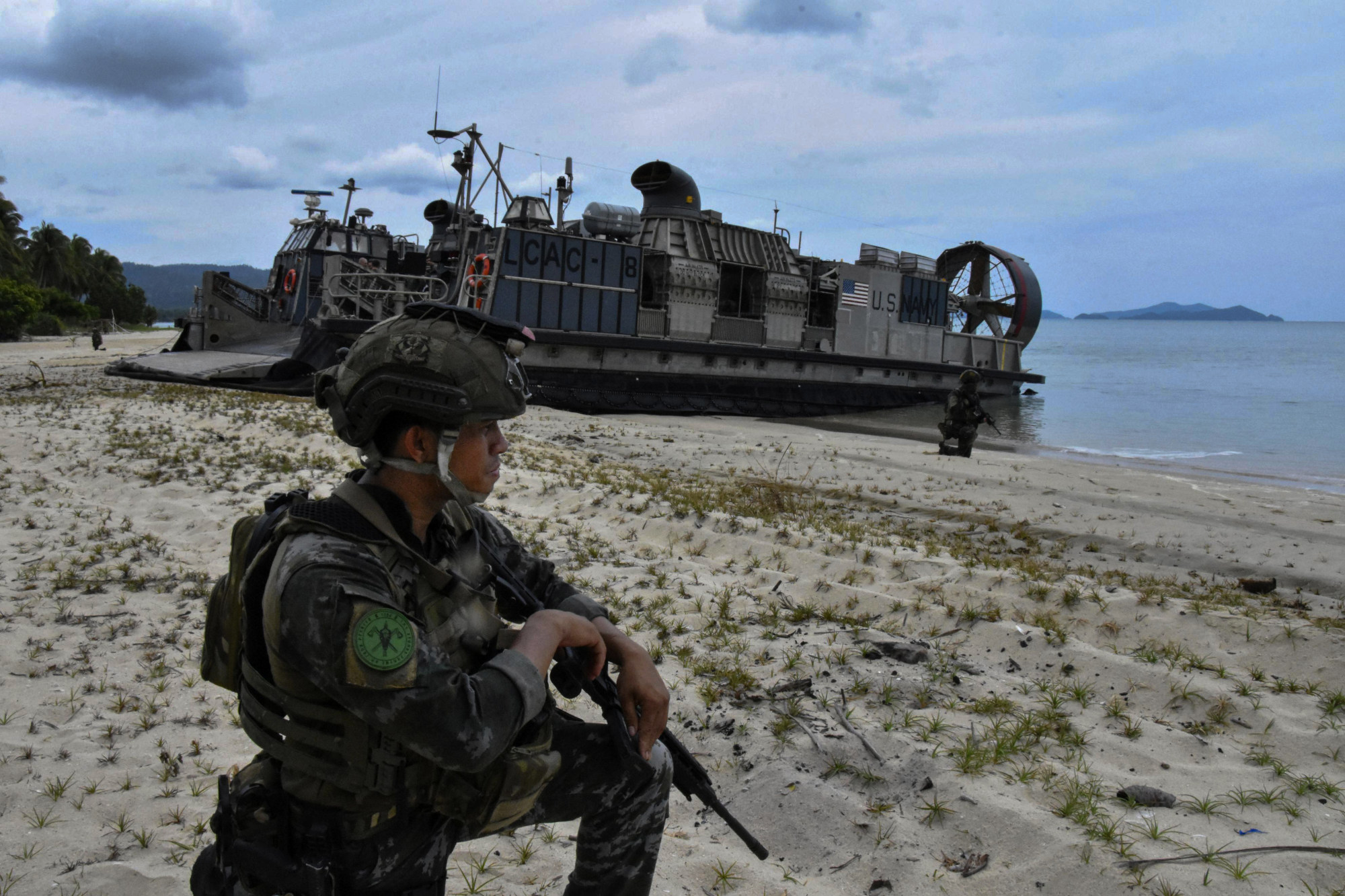
Philippines’ use of Canadian system to track Chinese ship signals Ottawa’s interests
- Ottawa’s support for Manila’s position in the South China Sea row may antagonise Beijing, analysts say
The Philippine coastguard said the satellite system, launched after Manila and Ottawa signed a memorandum of understanding last year, had boosted the Philippines’ ability to track China’s activities and was key in safeguarding Manila’s maritime domain even as adversarial vessels turned off their location-transmitting devices.
Philippine coastguard spokesman Commodore Jay Tarriela on Thursday reported the tracking of activities by Beijing’s 13,000-tonne coastguard ship – nicknamed “The Monster” – over the last 10 days. The vessel moved close to El Nido in Palawan, the Philippine island facing the South China Sea, at one point.
“It directly encroached upon the territorial waters of the Philippine-occupied features, of Parola and Pagasa, violating our sovereignty,” Tarriela said, adding the vessel was later detected on the Philippine side of the Spratly archipelago and possibly resupplied for logistics before continuing on its voyage, including into the exclusive economic zones of Malaysia and Brunei.
The Philippine coastguard said the vessel continued moving through the region before heading towards El Nido and maintained a close distance of 34 nautical miles from its coastline.

“From there, it made a quick turn towards Bajo De Masinloc [Scarborough Shoal], where it joined three other China coastguard vessels that were deployed in the area. After spending a few hours loitering at the shoal, the ship sailed back towards Hainan,” Tarriela said.
In 2012, China gained control of Scarborough Shoal, a traditional fishing ground, after a stand-off with the Philippines, and the area has seen bouts of high-tension encounters over sovereignty and fishing rights for years.
Canada has been supporting Manila’s position in its maritime dispute amid China’s assertiveness in the West Philippine Sea, an area within the South China Sea that includes the Philippine exclusive economic zone. It agreed with the 2016 ruling by the Permanent Court of Arbitration that said Beijing’s South China Sea claims had no legal basis. China – which is a party to Unclos – rejected the ruling, insisting it had jurisdiction over the waterways as indicated by its so-called nine-dash line.
In January this year, the Philippines and Canada signed a defence agreement paving the way for initiatives in military education, training exchanges, information sharing, peacekeeping operations, and disaster response.
Abdul Rahman Yaacob, a research fellow in the Southeast Asia Programme at the Lowy Institute, told This Week in Asia that China would likely be antagonised by the Canadian involvement.
China, which recently warned Japan not to interfere in South China Sea disputes, was uncomfortable with any external powers providing help to Southeast Asian states over their maritime territorial claims, Yaacob said.

“Allowing Manila to use Canada’s technology, in this case, is aligned with Canada’s interests in the Indo-Pacific region. Canada is not the only external power that shares intelligence with Southeast Asian states such as the Philippines. The US and Australia too do share intelligence with regional states to enhance their maritime domain awareness.
“For example, the US enables some regional states to access certain information on the maritime domain so that these states can monitor and track potential illegal activities,” Yaacob said.
Similar to the US, Canada has an interest in the maritime domain in the Indo-Pacific region, especially in ensuring freedom of navigation and a rules-based order, according to Yaacob.
American security analyst Raymond Powell, also director of SeaLight – a project based in Stanford University that aims to track maritime grey-zone activities – said in a separate interview that Canada was a maritime country deeply invested in the rules-based order that had prevailed for the past eight decades.
“Providing dark vessel detection to the Philippines, which is on the front lines of an acute and growing threat to that order, is very consistent with its interests. As the world’s most sophisticated grey-zone operator, Beijing is antagonised by maritime transparency in all its forms across the South China Sea,” Powell said.

Useful deterrence against China
Security analyst Chester Cabalza, president of the Manila-based International Development and Security Cooperation, told This Week in Asia that Ottawa’s hybrid satellite tracking system was advanced and could help in Manila’s deterrence strategy against Beijing.
Cabalza added: “Like many Western countries, Canada sees the Indo-Pacific region as the future engine of the world and the Philippines happens to be at the centre of this newly designed economic and strategic region.”
He also said the use of Canadian technology by Manila could spur the Chinese to use newer devices to counter such systems.
In November 2022, Canada announced its Indo-Pacific Strategy, highlighting its commitment to support upholding the law of the sea, investing in military operations, participating in training exercises in the South China Sea and Taiwan and sharing intelligence with regional states.
Don McLain Gill, a geopolitical analyst and lecturer at the Department of International Studies of De La Salle University, told This Week in Asia Canada had considerable interests in ensuring the peace and the stability of the Indo-Pacific’s maritime domain as a portion of its trade with Southeast Asian and East Asian countries coursed through the waters of the Western Pacific.
“Canada, like the Philippines, is no stranger to Chinese belligerence and provocations. Therefore, a major dimension of Ottawa’s Indo-Pacific strategy lies in contributing to the peace, security, and resilience of the region,” Gill said.
“However, while compared with other Western nations, Canada’s security outreach to the Indo-Pacific has been limited. Nevertheless, its growing defence partnership with the Philippines serves as an important pillar in enhancing its role as a contributor of security and stability in the Indo-Pacific.”
